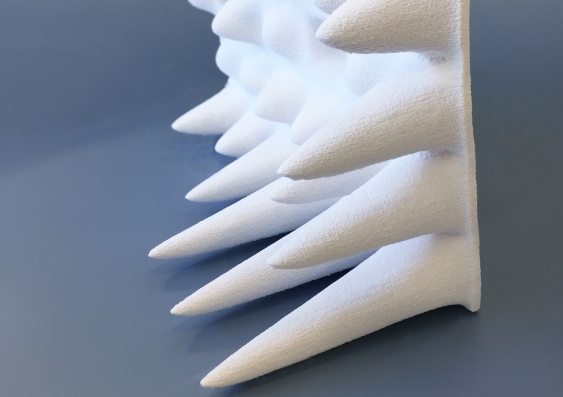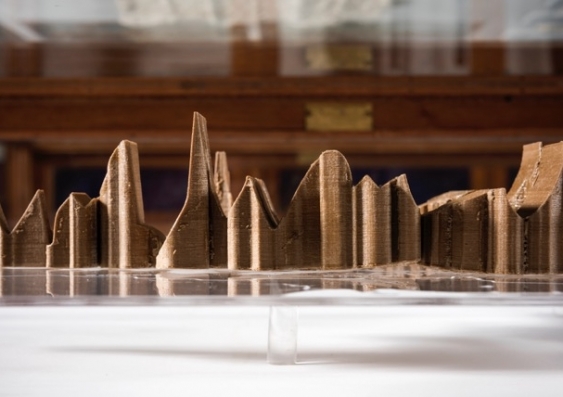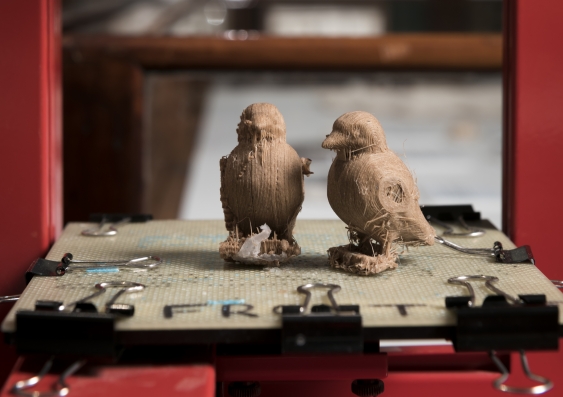Spoonful of sugar helps explain climate change
UNSW Art & Design lecturer Kate Dunn is using everyday ingredients like sugar, clay, coffee and wood pulp to create 3D printed art works from climate change data.
UNSW Art & Design lecturer Kate Dunn is using everyday ingredients like sugar, clay, coffee and wood pulp to create 3D printed art works from climate change data.

Fran Strachan
Communications Manager Low Carbon Living CRC
+61 2 9385 5402
fran.strachan@unsw.edu.au
UNSW Art & Design lecturer Kate Dunn is using everyday ingredients like sugar, clay, coffee and wood pulp to create 3D printed art works from climate change data.
A research leader in Digital Fabrication and Material Innovation in the Creative Robotics Lab at UNSW Art and Design, Dunn’s PhD investigates using sustainable materials to 3D print complex information, including the dense scientific data relating to climate change.
“I’d listen to climate scientist’s talk and think, ‘There must be a way to make this information more accessible’.
“Climate change is our great global, environmental challenge, but I’m also hyper-aware that 3D-printed products will eventually contribute to landfill. I wanted to find out how to do what I love, but do it ethically,” said Dunn.
And so began her collaboration with UNSW climate scientist Dr Sarah Perkins-Kirkpatrick from the Climate Change Research Centre’s extreme weather team.
Perkins-Kirkpatrick is developing new ways to measure the intense and frequent heatwaves the world is experiencing as global temperatures rise.
Taking Perkins-Kirkpatrick’s data on Australian temperature spikes during January of 2015, Dunn 3D powder-printed the data’s dramatic peaks and troughs.

Heatwaves in Australia in 1910, 1960 and 2015 3D printed using recycled wood filament. By Kate Dunn.
“It was a technical feat,” said Dunn who developed a sustainable filament from porcelain, sugar, alcohol, water and the food additive, maltodextrin to print the data.
She also 3D printed Perkins-Kirkpatrick’s research comparing heatwaves in Australia in 1910, 1960 and 2015 using recycled wood filament.
“The filament retains some of the physical qualities of the wood and shows the stratification of the 3D printing process, emphasising the temperature spikes under the effects of climate change,” said Dunn.
Perkins-Kirkpatrick said scientists are familiar with charts and graphs but not everyone is comfortable with them.
“Kate’s work is a really cool way of visualising actual climate data. You can see how heatwaves have changed really easily, with very little explanation necessary.”
Dunn said artists have a key role to play in communicating the effects of climate change.
“The idea that you can walk around this information, touch it and experience it, makes it easier to understand.
“Artists offer pathways to locate people in complex information using visual tools. I’m always questioning how we can use narrative, touch and objects to engage people. Numbers and graphs don’t work for everyone.”

3D printed wooden zebra finches, one of Australia's native species that cannot survive heatwaves. By Kate Dunn.
Dunn and Perkins-Kirkpatrick will take part in a panel discussion We all know Climate Change is real so why is it so hard to talk about? with journalist Paddy Manning and science communicator and journalist, Alvin Stone from UNSW’s ARC Centre of Excellence for Climate System Science on Friday, 16 September at the Michael Crouch Innovation Centre.
The panel, which will discuss how climate change is communicated in the media, arts and sciences, will be introduced by Scientia Professor Matthew England, academic lead of UNSW’s Climate Change Grand Challenge.
“The reason we want to host the panel is to show that it’s not just the responsibility of climate change scientists to communicate what’s happening to our planet, but to explore how artists and scientists can work together,” Dunn said.